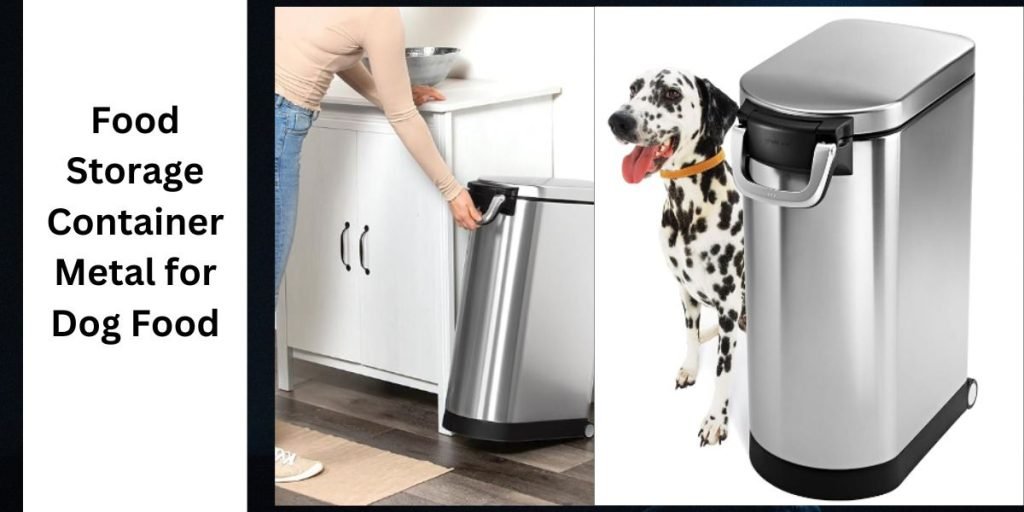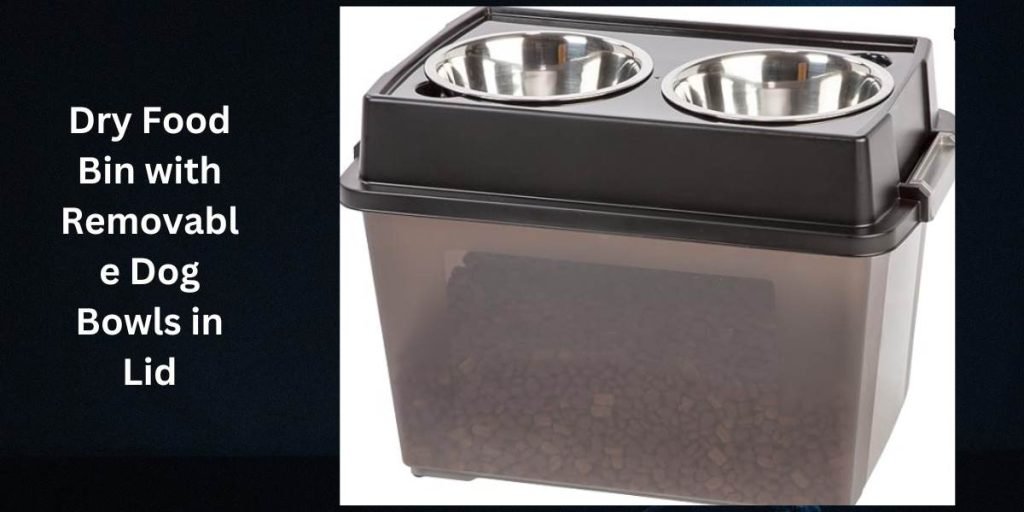Proper storage of dog food is crucial for maintaining its nutritional value, freshness, and safety. For those who buy dog food in large quantities, such as 50 lb bags, understanding the best storage practices is essential. This comprehensive guide will cover everything you need to know about storing 50 lb dog food bags, including why proper storage is important, different storage options, tips for maintaining freshness, and potential issues to watch out for. By the end of this guide, you will be equipped with all the knowledge necessary to ensure your dog’s food remains fresh and nutritious.
Proper storage of dog food, particularly in large quantities like 50 lb bags, is crucial for maintaining its nutritional value, freshness, and safety. Ensuring that your dog’s food remains in optimal condition involves selecting the right storage containers, maintaining proper storage conditions, and being aware of potential issues such as pest infestation and nutrient degradation. This comprehensive guide will cover everything you need to know about effectively storing 50 lb dog food.

The Importance of Proper Dog Food Storage
1.1 Why Proper Storage Matters
Proper storage of dog food is important for several reasons:
- Nutritional Integrity: Maintaining the nutritional value of dog food is crucial for your pet’s health. Improper storage can lead to nutrient degradation.
- Freshness: Proper storage helps keep the food fresh, ensuring it remains palatable and safe for your dog to eat.
- Prevention of Contamination: Storing dog food correctly minimizes the risk of contamination by pests, bacteria, and mold.
- Cost Efficiency: Proper storage extends the shelf life of dog food, reducing waste and saving money in the long run.
1.2 Risks of Improper Storage
Improper storage of dog food can lead to several issues, including:
- Spoilage: Exposure to moisture and air can cause dog food to spoil, leading to potential health risks for your dog.
- Pest Infestation: Inadequately stored food can attract pests such as rodents, insects, and other animals.
- Nutrient Loss: Nutrients can degrade over time if the food is not stored in optimal conditions.
- Off Odors and Flavors: Improper storage can result in off odors and flavors, making the food unappetizing for your dog.
Types of Dog Food Storage Containers
2.1 Plastic Storage Containers
Plastic storage containers are a popular choice for dog food storage. They come in various sizes, including those large enough to hold 50 lb bags of dog food.
Pros:
- Lightweight and easy to handle.
- Often come with airtight seals to keep food fresh.
- Available in various shapes and sizes.
Cons:
- Can absorb odors over time.
- May become brittle and crack if exposed to extreme temperatures.
2.2 Metal Storage Containers

Metal storage containers are durable and provide excellent protection for dog food. They are often made from stainless steel or galvanized steel.
Pros:
- Durable and long-lasting.
- Resistant to pests and rodents.
- Do not absorb odors.
Cons:
- Heavier and less portable than plastic containers.
- Can be more expensive.
2.3 Glass Storage Containers
Glass storage containers are another option, though they are less common for storing large quantities of dog food.
Pros:
- Do not absorb odors.
- Easy to clean.
- Chemically inert, meaning they do not react with the food.
Cons:
- Heavy and fragile.
- Less practical for large quantities like 50 lb bags.
2.4 Fabric Storage Bags
Fabric storage bags, often made from heavy-duty materials, are portable and convenient for short-term storage.
Pros:
- Lightweight and portable.
- Often come with handles for easy carrying.
Cons:
- Less effective at keeping out pests and moisture.
- Not as durable as plastic or metal containers.
Choosing the Right Storage Container

3.1 Factors to Consider
When selecting a storage container for 50 lb bags of dog food, consider the following factors:
- Size: Ensure the container can comfortably hold 50 lbs of dog food.
- Airtight Seal: Look for containers with airtight seals to keep food fresh and prevent contamination.
- Material: Choose a material that suits your needs in terms of durability, ease of cleaning, and resistance to pests.
- Portability: If you need to move the container frequently, consider its weight and portability.
- Ease of Access: Choose a container with a wide opening for easy scooping and refilling.
3.2 Recommended Storage Containers
Here are some recommended storage containers that are suitable for storing 50 lb bags of dog food:
- Vittles Vault Airtight Stackable Pet Food Container: Made from heavy-duty plastic with an airtight seal and stackable design.
- IRIS Airtight Pet Food Storage Container: A durable plastic container with airtight latches and wheels for easy mobility.
- Bergan Smart Storage: An elevated storage solution with an airtight lid and a spout for easy dispensing.
- Simplehuman Large Pet Food Storage Can: A sleek metal container with an airtight seal and a built-in scoop.
Proper Storage Techniques
4.1 Preparing the Storage Area
Before storing your dog food, it’s important to prepare the storage area to ensure optimal conditions.
4.1.1 Cleanliness
- Clean the Area: Ensure the storage area is clean and free from dust, dirt, and pests.
- Regular Maintenance: Regularly clean the storage container and surrounding area to prevent contamination.
4.1.2 Temperature and Humidity Control
- Cool Environment: Store dog food in a cool, dry place to prevent spoilage. Avoid areas with high temperatures or humidity.
- Avoid Sunlight: Keep the food out of direct sunlight, as exposure to light can degrade nutrients and promote spoilage.
4.2 Transferring Food to the Storage Container
When transferring dog food from the original bag to the storage container, follow these steps:
- Wash Hands: Wash your hands thoroughly to avoid contaminating the food.
- Clean the Container: Ensure the storage container is clean and dry before use.
- Transfer Small Batches: Transfer the food in small batches to avoid spills and ensure even distribution.
- Seal the Container: After transferring the food, seal the container tightly to maintain freshness.
4.3 Using the Original Bag
Some pet owners prefer to keep the food in its original bag and place the bag inside the storage container. This method provides an extra layer of protection.
- Keep Bag Sealed: Ensure the bag is tightly sealed before placing it in the container.
- Label the Bag: Write the date of purchase on the bag to keep track of its freshness.

4.4 Regular Maintenance
Regular maintenance of the storage container is essential for keeping dog food fresh and safe.
- Clean the Container: Clean the storage container regularly to prevent buildup of oils and residue.
- Check for Spoilage: Regularly inspect the food for signs of spoilage, such as mold, off odors, or changes in texture.
Storing Dog Food in Different Environments
5.1 Indoor Storage
Indoor storage is ideal for maintaining the quality of dog food. Here are some tips for indoor storage:
- Pantry or Closet: Store the container in a pantry or closet that is cool, dry, and away from direct sunlight.
- Kitchen: If storing in the kitchen, keep the container away from heat sources such as ovens or stovetops.
- Basement: A cool, dry basement can be a suitable storage area, provided it is free from moisture and pests.
5.2 Garage Storage
Storing dog food in the garage can be convenient but requires careful consideration to avoid temperature and moisture issues.
- Elevate the Container: Place the container on a shelf or pallet to keep it off the ground and prevent moisture absorption.
- Insulated Area: Store the container in an insulated area to protect it from extreme temperature fluctuations.
5.3 Outdoor Storage
Outdoor storage is generally not recommended due to exposure to weather conditions and pests. However, if necessary:
- Weatherproof Container: Use a weatherproof container with a secure lid to protect against rain and pests.
- Shaded Area: Store the container in a shaded area to minimize temperature fluctuations.
Potential Issues and Solutions
6.1 Pest Infestation
Pests such as rodents, insects, and other animals can contaminate dog food. Here are some prevention tips:
- Airtight Containers: Use airtight containers to keep pests out.
- Regular Inspections: Regularly inspect the storage area for signs of pests.
- Cleanliness: Maintain cleanliness in the storage area to deter pests.
6.2 Moisture and Mold
Moisture can lead to mold growth, which is harmful to your dog. To prevent this:
- Dry Environment: Store the food in a dry place with low humidity.
- Seal Containers: Use airtight containers to prevent moisture from entering.
- Silica Gel Packs: Consider using silica gel packs in the storage container to absorb excess moisture.
6.3 Nutrient Degradation
Exposure to air, light, and heat can degrade the nutrients in dog food. To minimize nutrient loss:
- Airtight Seals: Ensure containers are airtight to reduce exposure to air.
- Cool, Dark Storage: Store the food in a cool, dark place away from light and heat.
Off Odors and Flavors
Improper storage can result in off odors and flavors, making the food unappealing to your dog. Prevent this by:
- Clean Containers: Regularly clean storage containers to remove residue and buildup.
- Proper Sealing: Ensure containers are properly sealed to maintain freshness.

